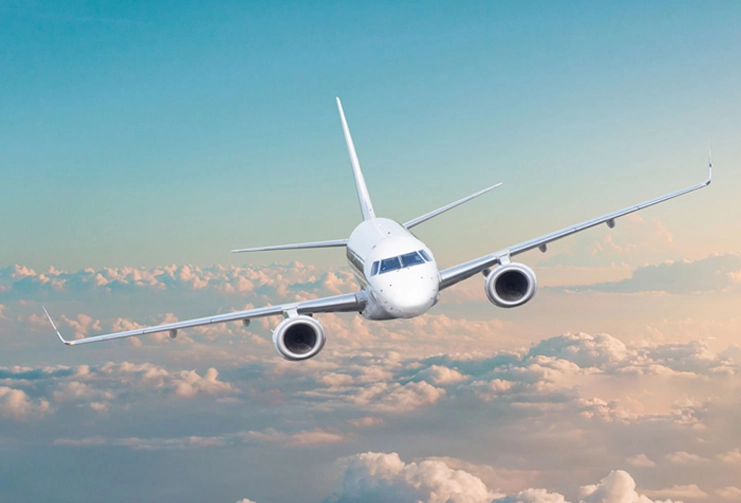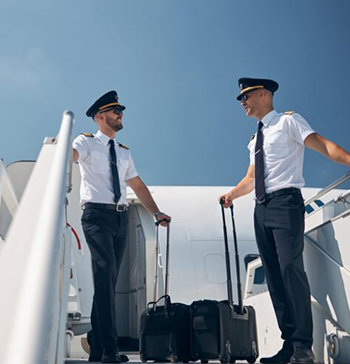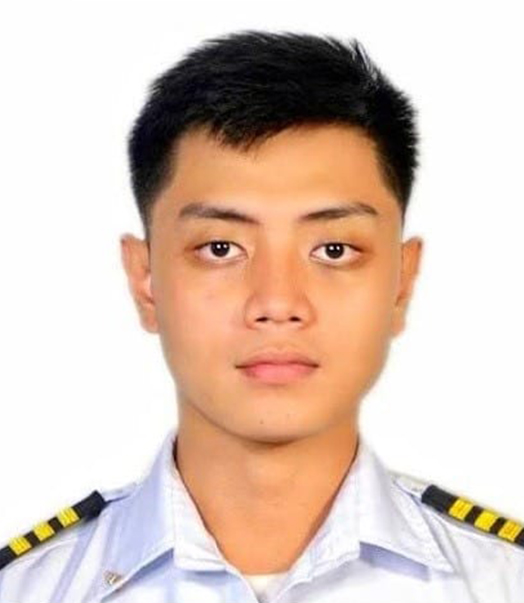
Why I Chose the Philippines for My Pilot Training Instead of South Sudan – Abdul Wadood’s Journey
In recent years, aviation has become an increasingly important field worldwide, offering numerous opportunities for aspiring pilots. For individuals like me, Abdul Wadood, hailing from South Sudan, the decision to pursue pilot training abroad was a significant one. Growing up in South Sudan, I developed a deep passion for aviation and dreamt of one day becoming a pilot. However, the path to achieving this dream was not straightforward. I had to make a choice between pursuing my training in South Sudan or seeking education elsewhere. After careful consideration, I chose the Philippines as my destination for pilot training, and this decision has been transformative in more ways than one.
This article is my personal account of why I opted to study in the Philippines, detailing the factors that influenced my decision, the challenges I faced in making this choice, and the benefits I’ve gained from training in the Philippines.
A Comparison Between Aviation in South Sudan and the Philippines
South Sudan, being one of the youngest nations in the world, is still in the early stages of developing many of its infrastructure sectors, including aviation. While the country is working hard to build its aviation industry, it currently lacks the advanced facilities and established training programs needed to meet international standards. Aviation academies in South Sudan are still limited in their capacity, and access to well-maintained aircraft and qualified instructors can be a challenge. This was one of the primary reasons that led me to look beyond my homeland for pilot training.
In contrast, the Philippines has a long history of aviation and flight training, with several well-established flight schools that meet international aviation standards. The country’s aviation industry is robust, offering modern facilities, well-equipped aircraft, and experienced instructors, all of which are essential for a world-class pilot training experience. Philippine pilot schools have trained countless pilots, many of whom have gone on to have successful careers in the global aviation industry.
Moreover, the Philippines is recognized by international aviation bodies such as the International Civil Aviation Organization (ICAO), which ensures that the quality of training in the country is at par with global standards. This international recognition was a key factor in my decision to study here, as it assures me that the skills and qualifications I gain will be globally respected.
Want to find out more about our pilot courses?
The Quality of Flight Training in the Philippines
One of the most important factors in selecting a pilot training school is the quality of the training provided. In the Philippines, there are several flight schools with excellent reputations, including Orient Aviation Philippines. The country’s flight training programs are known for their comprehensive and rigorous curricula, which cover all aspects of aviation—from theoretical knowledge to practical flying skills.
Orient Aviation Philippines, for instance, offers a complete range of courses that cater to different stages of pilot training, including Private Pilot License (PPL), Commercial Pilot License (CPL), and instrument ratings, among others. The instructors are highly experienced, many of them having flown for international airlines or served in military aviation. This level of expertise ensures that students receive top-notch education, preparing them for various challenges they may face in their flying careers.
The training environment in the Philippines is also conducive to learning, with state-of-the-art simulators and well-maintained aircraft, ranging from single-engine trainers to multi-engine aircraft. Students are exposed to real-world flying conditions, as they train in diverse weather conditions and terrains. This diversity in training scenarios helps in building confidence and experience in handling different flight situations.
Affordability and Cost-Effectiveness
One of the major concerns for many aspiring pilots, especially those from developing countries like South Sudan, is the cost of flight training. Pilot training can be prohibitively expensive, particularly in Western countries like the United States or Europe, where tuition fees, living expenses, and other costs can add up quickly. For me, financial considerations played a crucial role in my decision-making process.
The Philippines offered a more affordable option without compromising on the quality of education. The cost of flight training in the Philippines is significantly lower compared to many other countries, making it an attractive option for international students. Additionally, the cost of living in the Philippines is relatively low, which further reduces the overall expense of studying here. This made it feasible for me to pursue my dream of becoming a pilot without the heavy financial burden that I would have faced had I chosen other countries.
The affordability of training in the Philippines does not mean a compromise in the quality of education. Philippine flight schools are known for maintaining high standards, ensuring that students receive excellent training at a fraction of the cost compared to schools in Western countries.
Cultural and Linguistic Advantages
As someone from South Sudan, I was concerned about potential language barriers and cultural differences when choosing a country for my pilot training. However, the Philippines is known for its high level of English proficiency. English is one of the official languages in the Philippines and is widely used in educational institutions, including flight schools. This was a major advantage for me, as it meant I would not have to learn a new language to understand my lessons or communicate with instructors and peers.
The cultural experience in the Philippines is another factor that contributed to my decision. The Philippines is known for its warm and welcoming people, and the country has a rich and diverse culture that I found both fascinating and comfortable to adapt to. Filipinos are generally open to international students, and I felt a sense of belonging almost immediately. The multicultural environment in flight schools here also exposed me to peers from different countries, enriching my learning experience and allowing me to build a global network of contacts in the aviation industry.
Geographic and Climatic Advantages for Training
The Philippines’ geographic location and tropical climate offer unique advantages for flight training. The country’s varied landscapes, which include islands, mountains, and coastal areas, provide a diverse range of flying conditions. Training in such diverse environments equips students with the skills to handle different scenarios, making them more versatile and experienced pilots.
The tropical climate in the Philippines means that there is year-round flying weather, with minimal disruptions due to extreme cold or snow. This allows for continuous training without long breaks, helping students complete their courses more efficiently and in a shorter time frame.
Additionally, the Philippines’ proximity to other Asian countries and its strategic location in the Asia-Pacific region make it an ideal training ground for those aspiring to work in international aviation. The region is home to some of the world’s busiest air routes, and training here provides invaluable experience in navigating high-traffic airspaces.
Personal Growth and Life Lessons
Beyond the technical training, studying in the Philippines has provided me with life lessons and personal growth that I may not have experienced if I had stayed in South Sudan. Moving to a foreign country for the first time, adjusting to a new environment, and learning to live independently have all contributed to my development as a person. I have become more self-reliant, resilient, and adaptable qualities that are essential not only for a successful career as a pilot but also in life.
The Philippines’ rich culture and diverse environment have broadened my perspective, helping me understand different ways of life and fostering a sense of global citizenship. I’ve also had the opportunity to learn about the aviation industry from a regional perspective, gaining insights into the challenges and opportunities that pilots face in the Asia-Pacific region.
These personal experiences, combined with the professional training I’ve received, have prepared me not only to become a competent pilot but also to navigate the complexities of the global aviation industry.
Challenges Faced Along the Way
While my experience in the Philippines has been overwhelmingly positive, it has not been without its challenges. One of the difficulties I faced initially was homesickness. Moving away from family and friends in South Sudan to a new country was emotionally taxing, especially in the beginning. However, the supportive community I found in the Philippines helped me overcome this challenge.
Another challenge was adjusting to the pace and rigour of pilot training. Aviation is a demanding field, and the training requires a high level of focus, discipline, and dedication. There were times when I felt overwhelmed by the amount of information I needed to learn and the skills I had to master. However, the experienced instructors at Orient Aviation Philippines provided the guidance and support I needed to push through these challenges.
Finally, like many international students, I had to navigate the complexities of visas, paperwork, and adjusting to a new academic system. The process of obtaining a student visa and meeting all the requirements was time-consuming and sometimes frustrating. However, with the help of the school’s administrative staff and the support of fellow students, I was able to successfully manage these challenges.
Conclusion
Choosing the Philippines for my pilot training has been one of the best decisions of my life. The combination of high-quality education, affordable costs, diverse flying conditions, and the welcoming cultural environment has made this country an ideal place for aspiring pilots like me. Although I could have pursued my training in South Sudan, the opportunities available in the Philippines have provided me with a well-rounded, globally recognized education that will serve as a strong foundation for my future career as a pilot.
The journey has been challenging at times, but it has also been incredibly rewarding. I have gained not only the technical skills necessary to succeed in the aviation industry but also personal growth and a broadened worldview that will stay with me for the rest of my life. I look forward to the day when I can return to South Sudan, equipped with the knowledge and experience I’ve gained in the Philippines, and contribute to the growth of the aviation industry in my home country. Until then, I am grateful for the opportunity to train in the Philippines and for the doors it has opened for my future in aviation.
Free Career Guide

Want to find out more about our pilot courses?
Download our free eBook to learn all about pilot training in the Philippines, including the qualifications needed, the training process, available courses, and career opportunities. Find out how you can take the first step toward a rewarding career in aviation.
Download Pilot Course Information Guide
Our Pilot Training Courses
Take flight with our comprehensive Pilot Training Courses, designed to elevate your aviation career







